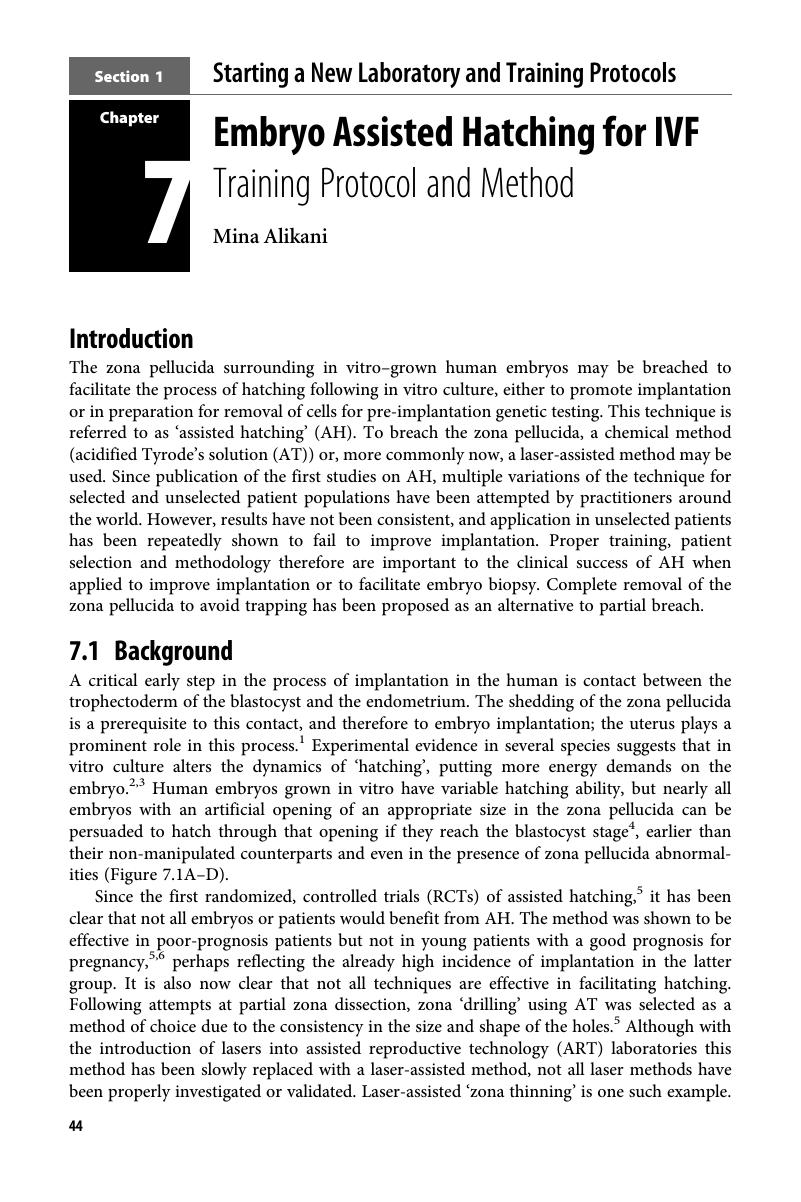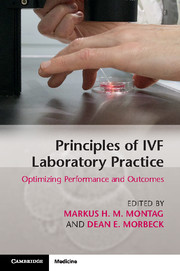Book contents
- Principles of IVF Laboratory Practice
- Principles of IVF Laboratory Practice
- Copyright page
- Contents
- Contributors
- Foreword
- Preface
- Section 1 Starting a New Laboratory and Training Protocols
- Chapter 1 Establishing and Equipping a New IVF Laboratory
- Chapter 2 Basic Embryology Skills in the IVF Laboratory
- Chapter 3 Sperm Preparation for IVF
- Chapter 4 Oocyte Pickup for IVF
- Chapter 5 Embryo Transfer for IVF
- Chapter 6 ICSI for IVF
- Chapter 7 Embryo Assisted Hatching for IVF
- Chapter 8 Embryo Biopsy for IVF
- Chapter 9 Vitrification for IVF
- Chapter 10 Mouse Embryo Assay for Quality Control in the IVF Laboratory
- Chapter 11 Sperm Survival Assay for Quality Control in the IVF Laboratory
- Section 2 Pre-Procedure Protocols
- Section 3 Gametes
- Section 4 Insemination/ICSI
- Section 5 Fertilization Assessment
- Section 6 Embryo Assessment
- Section 7 Embryo Cryopreservation
- Section 8 Embryo Biopsy
- Section 9 Embryo Transfer
- Section 10 Quality Management
- Index
- PDF Only
- References
Chapter 7 - Embryo Assisted Hatching for IVF
Training Protocol and Method
from Section 1 - Starting a New Laboratory and Training Protocols
Published online by Cambridge University Press: 11 May 2017
- Principles of IVF Laboratory Practice
- Principles of IVF Laboratory Practice
- Copyright page
- Contents
- Contributors
- Foreword
- Preface
- Section 1 Starting a New Laboratory and Training Protocols
- Chapter 1 Establishing and Equipping a New IVF Laboratory
- Chapter 2 Basic Embryology Skills in the IVF Laboratory
- Chapter 3 Sperm Preparation for IVF
- Chapter 4 Oocyte Pickup for IVF
- Chapter 5 Embryo Transfer for IVF
- Chapter 6 ICSI for IVF
- Chapter 7 Embryo Assisted Hatching for IVF
- Chapter 8 Embryo Biopsy for IVF
- Chapter 9 Vitrification for IVF
- Chapter 10 Mouse Embryo Assay for Quality Control in the IVF Laboratory
- Chapter 11 Sperm Survival Assay for Quality Control in the IVF Laboratory
- Section 2 Pre-Procedure Protocols
- Section 3 Gametes
- Section 4 Insemination/ICSI
- Section 5 Fertilization Assessment
- Section 6 Embryo Assessment
- Section 7 Embryo Cryopreservation
- Section 8 Embryo Biopsy
- Section 9 Embryo Transfer
- Section 10 Quality Management
- Index
- PDF Only
- References
Summary

- Type
- Chapter
- Information
- Principles of IVF Laboratory PracticeOptimizing Performance and Outcomes, pp. 44 - 52Publisher: Cambridge University PressPrint publication year: 2017

